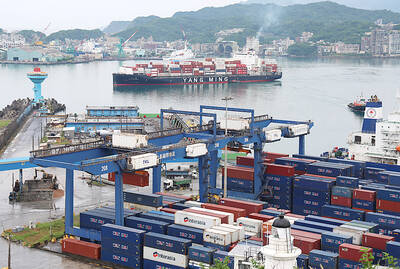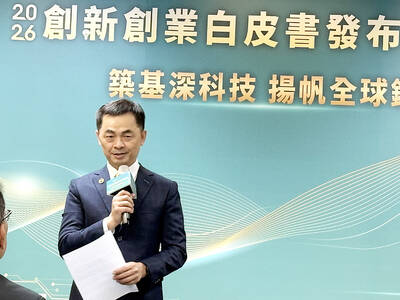Airlines and service providers seeking to deliver high-speed Internet services to passengers say they've learned from Boeing Co's decision last year to pull the plug on its ambitions to outfit its planes with a similar service.
Analysts say Boeing's failed Connexion online service was costly to install and operate, resulting in large expenditures before getting a single paying customer. An industrywide downturn triggered by the 2001 terrorist attacks made the system an even tougher sell to struggling airlines.
Among other things, JetBlue Airways Corp, AMR Corp's American Airlines and Virgin America are today turning to air-to-ground connections to avoid Boeing's expensive satellite fees.
"We wanted to attack every one of the things that were inhibitors in that first-generation system," said Jack Blumenstein, chief executive of Aircell LLC, which is providing service for American and Virgin.
JetBlue's LiveTV subsidiary paid the Federal Communications Commission US$7 million for wireless spectrum that one test JetBlue aircraft has used since Dec. 11 to communicate with about 100 cell towers across the continental US.
The 1 megahertz frequency band allows that aircraft to offer e-mail and instant-messaging on laptops and handheld devices for free through Yahoo Inc and BlackBerry maker Research In Motion Ltd.
Aircell licensed a band three times the size of LiveTV's for US$31 million and plans to offer broader Internet services, including Web surfing, for about US$10 a flight -- what Boeing had charged for the first hour. Pending regulatory approval, Aircell's first Internet-capable flight is expected on American next year using 92 cell towers.
The air-to-ground approach has its limits. It is useless for many international flights because of long trips over oceans. And it hasn't been approved outside North America.
That is why Alaska Air Group Inc's Alaska Airlines, which has over-the-ocean flights to Alaska and Hawaii, is going with a satellite-based system through Row 44 Inc. Row 44 is using an existing satellite network from Hughes Communications Inc rather than trying to assemble its own as Boeing had.
Panasonic Avionics Corp, a unit of Matsushita Electric Industrial Co, took a similar approach in developing a service for Australia's Qantas Airways Ltd and other airlines.
"The service itself is about three times more bandwidth-efficient than Connexion was," said David Bruner, Panasonic's executive director for corporate sales and marketing.
Boeing leased satellite transponders from various providers whether it needed the capacity or not. Under its deal with Intelsat Ltd, Panasonic can buy capacity in smaller units until it needs more.
Technology also has improved such that airplanes using Row 44 or Panasonic's systems don't need to carry as much weight as Boeing required, saving fuel costs.
Panasonic plans to charge about US$12 an hour or US$22 per 24-hour period for its service, compared with Boeing's US$10 for the first hour or US$27 for a day. Alaska hasn't set prices, and free service for frequent fliers is an option.
OnAir, which recently started service on one Air France aircraft, is taking yet another approach in delivering in-flight services. It is using existing cellular phone systems, including their technical and billing infrastructure.
With an onboard GSM cell "tower" certified by European regulators, phones won't emit strong signals and potentially interfere with the aircraft's navigational equipment trying to connect with a tower on the ground.
Glenn Fleishman, editor of the Wi-Fi Networking News site, said Connexion's failure resulted from Boeing's specific approach and "doesn't reflect the viability of [in-flight services] from a financial or technical perspective."
He said the new approaches look promising, but may run into issues with scalability or coverage.

CHIP RACE: Three years of overbroad export controls drove foreign competitors to pursue their own AI chips, and ‘cost US taxpayers billions of dollars,’ Nvidia said China has figured out the US strategy for allowing it to buy Nvidia Corp’s H200s and is rejecting the artificial intelligence (AI) chip in favor of domestically developed semiconductors, White House AI adviser David Sacks said, citing news reports. US President Donald Trump on Monday said that he would allow shipments of Nvidia’s H200 chips to China, part of an administration effort backed by Sacks to challenge Chinese tech champions such as Huawei Technologies Co (華為) by bringing US competition to their home market. On Friday, Sacks signaled that he was uncertain about whether that approach would work. “They’re rejecting our chips,” Sacks

NATIONAL SECURITY: Intel’s testing of ACM tools despite US government control ‘highlights egregious gaps in US technology protection policies,’ a former official said Chipmaker Intel Corp has tested chipmaking tools this year from a toolmaker with deep roots in China and two overseas units that were targeted by US sanctions, according to two sources with direct knowledge of the matter. Intel, which fended off calls for its CEO’s resignation from US President Donald Trump in August over his alleged ties to China, got the tools from ACM Research Inc, a Fremont, California-based producer of chipmaking equipment. Two of ACM’s units, based in Shanghai and South Korea, were among a number of firms barred last year from receiving US technology over claims they have

Taiwan’s exports soared 56 percent year-on-year to an all-time high of US$64.05 billion last month, propelled by surging global demand for artificial intelligence (AI), high-performance computing and cloud service infrastructure, the Ministry of Finance said yesterday. Department of Statistics Director-General Beatrice Tsai (蔡美娜) called the figure an unexpected upside surprise, citing a wave of technology orders from overseas customers alongside the usual year-end shopping season for technology products. Growth is likely to remain strong this month, she said, projecting a 40 percent to 45 percent expansion on an annual basis. The outperformance could prompt the Directorate-General of Budget, Accounting and

BARRIERS: Gudeng’s chairman said it was unlikely that the US could replicate Taiwan’s science parks in Arizona, given its strict immigration policies and cultural differences Gudeng Precision Industrial Co (家登), which supplies wafer pods to the world’s major semiconductor firms, yesterday said it is in no rush to set up production in the US due to high costs. The company supplies its customers through a warehouse in Arizona jointly operated by TSS Holdings Ltd (德鑫控股), a joint holding of Gudeng and 17 Taiwanese firms in the semiconductor supply chain, including specialty plastic compounds producer Nytex Composites Co (耐特) and automated material handling system supplier Symtek Automation Asia Co (迅得). While the company has long been exploring the feasibility of setting up production in the US to address